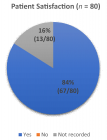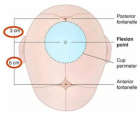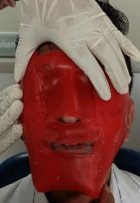Abstract
Research Article
Reliability and validity of the Sit-To-Stand Test to assess Global Foot Mobility
Mark W Cornwall*, Carissa Lane, Jennifer Norwood, Sara Patterson and Daniel Strauss
Published: 23 June, 2017 | Volume 2 - Issue 2 | Pages: 066-073
The Sit-to-Stand test (STST) involves comparing the change in a person’s non-weight-bearing and weight-bearing foot posture to quickly classify a person’s overall foot mobility. Despite the simplicity of the test, its reliability and validity has not been established. The purpose of this study is to determine the intra-rater and inter-rater reliability of the STST as well as its validity. Ninety-seven subjects with a mean age of 25 years (±3.7) participated in the study. Each subject’s foot posture from non-weight-bearing to weight-bearing was evaluated by two different raters. Each rater classified each subject’s change in foot posture as “Hypomobile”, “Normal” or “Hypermobile”. This same procedure was repeated approximately one week later without the raters being able to review what their original classification for that subject had been. The subjects also had their foot mobility quantified by measuring the height and width of their dorsal arch in both non-weight-bearing and weight-bearing. These quantitative measures of foot mobility were then classified as “Hypomobile”, “Normal”, or “Hypermobile” using quartiles. A series of Cohen’s Kappa coefficients were used to assess the amount of agreement between the visual classifications by each rater as well as the classification between the observational and objective classifications. The between-day Kappa coefficients ranged from 0.613 to 0.719 and the inter-rater Kappa coefficients ranged from 0.473 to 0.531. The Kappa coefficients between the visual and quantitative classifications ranged from 0.281 to 0.436. The STST should therefore be used with caution because of its moderate between-rater reliability and validity.
Read Full Article HTML DOI: 10.29328/journal.jsmt.1001010 Cite this Article Read Full Article PDF
References
- Williams DSB, Tierney RN, Butler RJ. Increased medial longitudinal arch mobility, lower extremity kinematics, and ground reaction forces in high-arched runners. J Ath Train. 2014; 49: 290-296. Ref.: https://goo.gl/8FDw5R
- Williams DS, Davis IM, Scholz JP, Hamill J, Buchanan TS. High-arched runner’s exhibit increased leg stiffness compared to low-arched runners. Gait Posture. 2004; 9: 263-269. Ref.: https://goo.gl/BX6TQ3
- Wyndow N, De Jong A, Rial K, Tucker K, Collins NJ, et al. The relationship of foot and ankle mobility to the frontal plane projection angle in asymptomatic adults. J Foot Ankle Res. 2016; 9: 1-7. Ref.: https://goo.gl/ffs41s
- Barton CJ, Bonanno D, Levinger P, Menz HB. Foot and ankle characteristics in patellofemoral pain syndrome: a case control and reliability study. J Orthop Sports Phys Ther. 2010; 40: 286-296. Ref.: https://goo.gl/vMqUB5
- McPoil TG, Warren M, Vicenzino B, Cornwall MW. Variations in foot posture and mobility between individuals with patellofemoral pain and those in a control group. J Am Pod Med Assoc. 2011; 101: 289-296. Ref.: https://goo.gl/KhqixN
- Mills K, Blanch P, Dev P, Martin M, Vicenzino B. A randomised control trial of short term efficacy of in-shoe foot orthoses compared with a wait and see policy for anterior knee pain and the role of foot mobility. Br J Sports Med. 2012; 46: 247-252. Ref.: https://goo.gl/NuV9Vd
- Pacey V, Nicholson LL, Adams RD, Munn J, Munns CF. Generalized joint hypermobility and risk of lower limb joint injury during sport: a systematic review with meta-analysis. Am J Sports Med. 2010; 38: 1487-1497. Ref.: https://goo.gl/HKJsxP
- Sahin N, Ozturk A, Atıcı T. Foot mobility and plantar fascia elasticity in patients with plantar fasciitis. Acta Orthop Traumatol Turc. 2010; 44: 385-391. Ref.: https://goo.gl/7qNPxS
- Reilly KA, Reilly K, Barker KL, Barker K, Shamley D, et al. Influence of foot characteristics on the site of lower limb osteoarthritis. Foot Ankle Int. 2006; 27: 206-211. Ref.: https://goo.gl/EVSvd4
- Bandholm T, Boysen L, Haugaard S, Zebis MK, Bencke J. Foot medial longitudinal-arch deformation during quiet standing and gait in subjects with medial tibial stress syndrome. J Foot and Ankle Surg. 2008; 47: 89-95. Ref.: https://goo.gl/DUti9C
- Bennett JE, Reinking MF, Pluemer B, Pentel A, Seaton M, et al. Factors contributing to the development of medical tibial stress syndrome in high school runners. J Orthop Sports Phys Ther. 2001; 31: 504-510. Ref.: https://goo.gl/r5TJnp
- Loudon JK, Jenkins W, Loudon KL. The relationship between static posture and ACL injury in female athletes. J Orthop Sports Phys Ther. 1996; 24: 91-97. Ref.: https://goo.gl/p7GHBH
- Brody DM. Techniques in the evaluation and treatment of the injured runner. Orthop Clin North Am. 1982; 13: 541-558. Ref.: https://goo.gl/Cfjcsc
- Evans AM, Copper AW, Scharfbillig RW, Scutter SD, Williams MT. Reliability of the foot posture index and traditional measures of foot position. J Am Podiatr Med Assoc. 2003; 93: 203-213. Ref.: https://goo.gl/vvLdQi
- Picciano AM, Rowlands MS, Worrell T. Reliability of open and closed kinetic chain subtalar joint neutral positions and navicular drop test. J Orthop Sports Phys Ther. 1993; 18: 553-558. Ref.: https://goo.gl/THjZnp
- Schultz S, Nguyen DM, Windley T, Kulas AS, Botic T, et al. Intratester and intertester reliability of clinical measures of lower extremity anatomic characteristics: Implications for muticenter studies. Clin J Sports Med. 2006; 16: 155-161. Ref.: https://goo.gl/hDNT8n
- McPoil TG, Cornwall MW, Vicenzino B, Teyhen DS, Molloy JM, et al. Effect of using truncated versus total foot length to calculate the arch height ratio. Foot. 2008; 18: 220-227. Ref.: https://goo.gl/u6ZZeu
- McPoil TG, Vicenzino B, Cornwall MW, Collins NJ, Warren M. Reliability and normative values for the foot mobility magnitude: a composite measure of vertical and medial-lateral mobility of the midfoot. J Foot Ankle Res. 2009; 2: 1-12. Ref.: https://goo.gl/qWcnXe
- Hoppenfeld S. Physical examination of the spine and extremities. Appleton-Century Crofts. New York. 1976; 232.
- Byrt T, Bishop J, Carlin JB. Bias, prevalence and kappa. J Clin Epidemiol. 1993; 46: 423-429. Ref.: https://goo.gl/tSr2PN
- Landis JR, Koch GG. The measurement of observer agreement for categorical data. Biometrics. 1977; 33: 159-174. Ref.: https://goo.gl/AVFipS
- Williams DS, McClay IS. Measurements used to characterize the foot and the medial longitudinal arch: reliability and validity. Phys Ther. 2000; 80: 864-871. Ref.: https://goo.gl/xh412b
- Elveru RA, Rothstein JM, Lamb RL. Goniometric reliability in a clinical setting. Subtalar and ankle joint measurements. Phys Ther. 1988; 68: 672-677. Ref.: https://goo.gl/yNn4Ft
- Cornwall MW, McPoil TG. Relationship between static foot posture and foot mobility. J Foot Ankle Res. 2011; 4: 1-9. Ref.: https://goo.gl/JKH1be
- Redmond AC, Crane YZ, Menz HB. Normative values for the Foot Posture Index. J Foot Ankle Res. 2008; 1: 1-9. Ref.: https://goo.gl/VSe9vK
Similar Articles
-
Physical activity can change the physiological and psychological circumstances during COVID-19 pandemic: A narrative reviewKhashayar Maroufi*. Physical activity can change the physiological and psychological circumstances during COVID-19 pandemic: A narrative review. . 2021 doi: 10.29328/journal.jsmt.1001051; 6: 001-007
-
‘Rotational alignment on patients’ clinical outcome of total knee arthroplasty: Distal femur axillary X-ray view to qualify rotation of the femoral componentS Magersky*. ‘Rotational alignment on patients’ clinical outcome of total knee arthroplasty: Distal femur axillary X-ray view to qualify rotation of the femoral component. . 2020 doi: 10.29328/journal.jsmt.1001050; 5: 008-011
-
Shoulder muscle weakness effects on muscle hardness around the shoulder joint and scapulaeKubota Atsushi*,Takayanagi Chiho,Kishimoto Kohei. Shoulder muscle weakness effects on muscle hardness around the shoulder joint and scapulae. . 2020 doi: 10.29328/journal.jsmt.1001049; 5: 001-007
-
Medical coverage of the 29th “Tour du Faso”Jean Marie Vianney Hope*,Abdoul Rahamane Cisse,Abdoulaye Ba. Medical coverage of the 29th “Tour du Faso”. . 2019 doi: 10.29328/journal.jsmt.1001040; 4: 038-042
-
Olfactory Dysfunction in Sports Players following Moderate and Severe Head Injury: A Possible Cut-off from Normality to PathologyGesualdo M Zucco*,Andrea Carletti,Richard J Stevenson. Olfactory Dysfunction in Sports Players following Moderate and Severe Head Injury: A Possible Cut-off from Normality to Pathology. . 2016 doi: 10.29328/journal.jsmt.1001001; 1: 001-005
-
Retrospective Analysis of Non-Contact ACL Injury Risk: A Case Series Review of Elite Female AthletesLee Herrington*,Ros Cooke. Retrospective Analysis of Non-Contact ACL Injury Risk: A Case Series Review of Elite Female Athletes. . 2017 doi: 10.29328/journal.jsmt.1001002; 2: 001-008
-
Translating an Evidence-Based Physical Activity Service From Context To Context: A Single Organizational Case StudyMarie-Eve Lamontagne,Kelly P Arbour-Nicitopoulos,Jennifer R Tomasone,Isabelle Cummings,Amy E Latimer-Cheung,François Routhier*. Translating an Evidence-Based Physical Activity Service From Context To Context: A Single Organizational Case Study. . 2017 doi: 10.29328/journal.jsmt.1001007; 2: 039-050
-
Effects of a short Cardiovascular Rehabilitation program in Hypertensive subjects: A Pilot StudyJuliana Bassalobre Carvalho Borges,Débora Tazinaffo Bueno,Monique Fernandes Peres,Ana Paula Aparecida Mantuani,Andréia Maria Silva,Giovane Galdino*. Effects of a short Cardiovascular Rehabilitation program in Hypertensive subjects: A Pilot Study. . 2017 doi: 10.29328/journal.jsmt.1001008; 2: 051-056
-
The Utility of Acupuncture in Sports Medicine: A Review of the Recent LiteratureMichael Malone*. The Utility of Acupuncture in Sports Medicine: A Review of the Recent Literature. . 2017 doi: 10.29328/journal.jsmt.1001004; 2: 020-027
-
Use of Hand Rehabilitation Board (Dominic’s Board) in Post Traumatic/Stroke Rehabilitation of the Upper LimbsDominic Essien,Christopher Ekpenyong*. Use of Hand Rehabilitation Board (Dominic’s Board) in Post Traumatic/Stroke Rehabilitation of the Upper Limbs. . 2017 doi: 10.29328/journal.jsmt.1001009; 2: 057-065
Recently Viewed
-
FITT-CORRECT: Updated dynamic and evidence-based principle of exercise prescriptionShambhu P Adhikari*,Jarugool Tretriluxana,Rubee Dev,Emily Eglitis,Nistha Shrestha,Cheryl Kerfeld6. FITT-CORRECT: Updated dynamic and evidence-based principle of exercise prescription. J Nov Physiother Rehabil. 2021: doi: 10.29328/journal.jnpr.1001039; 5: 005-009
-
Unusual cause of parietal thoracic pain: A case reportMohamed Labied*,Hayat Lhajoui,Najwa Touil,Omar Kacimi,Nabil Chikhaoui . Unusual cause of parietal thoracic pain: A case report. Arch Case Rep. 2020: doi: 10.29328/journal.acr.1001040; 4: 046-047
-
Zn2+ Ions-Immune Virucidal activities for children and adults with preventions against 2019-nCoV and COVID-19 infectionTsuneo Ishida*. Zn2+ Ions-Immune Virucidal activities for children and adults with preventions against 2019-nCoV and COVID-19 infection. J Child Adult Vaccines Immunol. 2020: doi: 10.29328/journal.jcavi.1001006; 4: 006-014
-
Exophthalmos Revealing a Spheno Temporo Orbital MeningiomaHassina S*, Krichene MA, Hazil Z, Bekkar B, Hasnaoui I, Robbana L, Bardi S, Akkanour Y, Serghini L, Abdallah EL. Exophthalmos Revealing a Spheno Temporo Orbital Meningioma. Int J Clin Exp Ophthalmol. 2024: doi: 10.29328/journal.ijceo.1001055; 8: 001-003
-
Unveiling the Impostor: Pulmonary Embolism Presenting as Pneumonia: A Case Report and Literature ReviewSaahil Kumar,Karuna Sree Alwa*,Mahesh Babu Vemuri,Anumola Gandhi Ganesh Gupta,Nuthan Vallapudasu,Sunitha Geddada. Unveiling the Impostor: Pulmonary Embolism Presenting as Pneumonia: A Case Report and Literature Review. J Pulmonol Respir Res. 2025: doi: 10.29328/journal.jprr.1001065; 9: 001-005
Most Viewed
-
Evaluation of Biostimulants Based on Recovered Protein Hydrolysates from Animal By-products as Plant Growth EnhancersH Pérez-Aguilar*, M Lacruz-Asaro, F Arán-Ais. Evaluation of Biostimulants Based on Recovered Protein Hydrolysates from Animal By-products as Plant Growth Enhancers. J Plant Sci Phytopathol. 2023 doi: 10.29328/journal.jpsp.1001104; 7: 042-047
-
Sinonasal Myxoma Extending into the Orbit in a 4-Year Old: A Case PresentationJulian A Purrinos*, Ramzi Younis. Sinonasal Myxoma Extending into the Orbit in a 4-Year Old: A Case Presentation. Arch Case Rep. 2024 doi: 10.29328/journal.acr.1001099; 8: 075-077
-
Feasibility study of magnetic sensing for detecting single-neuron action potentialsDenis Tonini,Kai Wu,Renata Saha,Jian-Ping Wang*. Feasibility study of magnetic sensing for detecting single-neuron action potentials. Ann Biomed Sci Eng. 2022 doi: 10.29328/journal.abse.1001018; 6: 019-029
-
Physical activity can change the physiological and psychological circumstances during COVID-19 pandemic: A narrative reviewKhashayar Maroufi*. Physical activity can change the physiological and psychological circumstances during COVID-19 pandemic: A narrative review. J Sports Med Ther. 2021 doi: 10.29328/journal.jsmt.1001051; 6: 001-007
-
Pediatric Dysgerminoma: Unveiling a Rare Ovarian TumorFaten Limaiem*, Khalil Saffar, Ahmed Halouani. Pediatric Dysgerminoma: Unveiling a Rare Ovarian Tumor. Arch Case Rep. 2024 doi: 10.29328/journal.acr.1001087; 8: 010-013

HSPI: We're glad you're here. Please click "create a new Query" if you are a new visitor to our website and need further information from us.
If you are already a member of our network and need to keep track of any developments regarding a question you have already submitted, click "take me to my Query."























































































































































